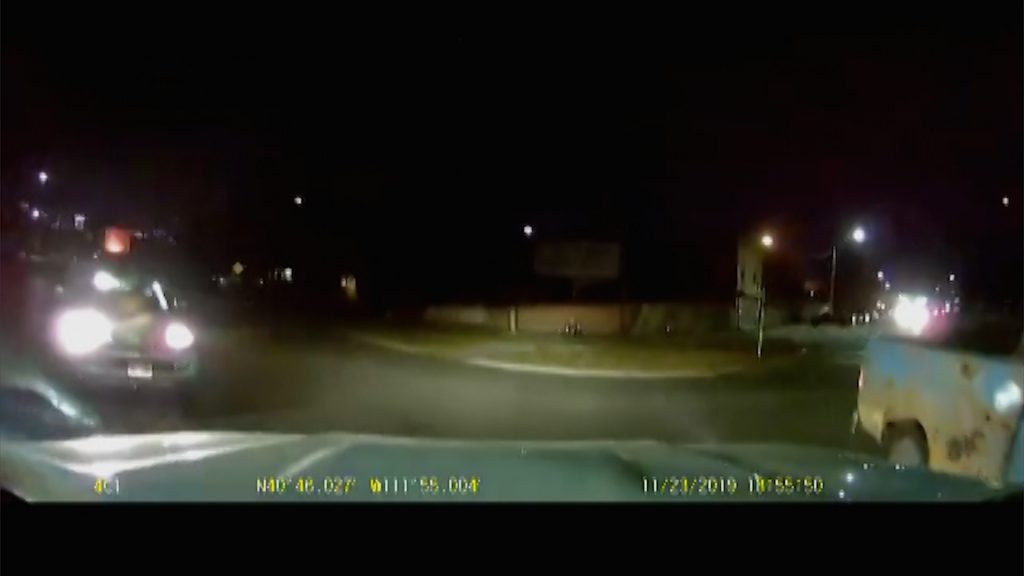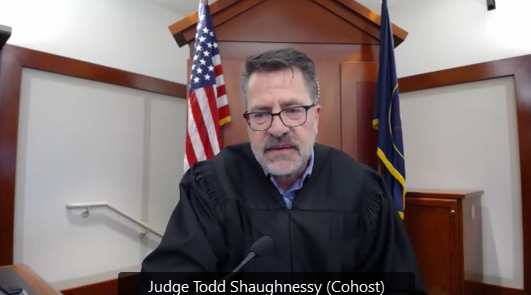‘My hands are tied’: Judge rules shooting that endangered child justified under Utah’s new self-defense law
Mar 4, 2022, 10:37 PM | Updated: Jun 19, 2022, 9:44 pm
SALT LAKE CITY – A Utah man successfully urged legislators to pass a law in 2021 that would allow people who claim self-defense to have a chance to get their charges dismissed without going to trial.
Friday, more than a year after his public testimony in support of HB227, the new law worked in Jon Michael Clara’s favor.
A judge dismissed Clara’s 2019 felony weapons case, despite the court’s position that a jury should decide whether Clara was justified when he opened fire on another driver, endangering others nearby after a bizarre crash.
“I believe my hands are tied and I have no choice, given the statute, but to dismiss the case,” said Third District Judge Todd Shaughnessy.
Utah's new self-defense law in action:
The judge says a jury should decide & a child was almost killed — but under the new law, "my hands are tied."
Case dismissed.
Story at 10 on @KSL5TV.
In the meantime, background from @KSLInvestigates: https://t.co/HqVHlyKbUY
— Daniella Rivera KSL (@DaniellaKSL) March 4, 2022
In November, the KSL Investigators first reported on unintended consequences of the controversial new law, a near copy-paste of a Florida statute.
Clara’s support of HB227
“This law, if it were passed, it would help people in my situation,” Clara told lawmakers during a legislative committee hearing in February 2021.

Jon Michael Clara (left) and defense attorney Clayton Simms (right) participate in a virtual hearing on March 4, 2022.
The Legislature passed HB227, and it went into effect in May, triggering a new pre-trial process for cases in which the accused claims self-defense.
Under HB227, prosecutors must now prove by clear and convincing evidence in a pre-trial hearing that the defendant did not act in self-defense or in the defense of others. If prosecutors cannot prove that an individual’s use of force was not justified during the justification hearing before a trial, the case is dismissed before it ever goes to a jury.
The new law went into effect on May 5, 2021. Clara filed a motion for a justification hearing on May 7.
Clara’s June trial was cancelled and the justification hearing, which was initially scheduled for July, was pushed back to November.
Case background
Clara faced seven felony counts of discharging a firearm after shooting at a blue truck with a snowplow that repeatedly crashed into the Toyota 4Runner Clara was driving on Nov. 23, 2019.

A blue truck with a snowplow rammed into an SUV multiple times, spinning it around to face oncoming traffic on Nov. 23, 2019.
According to a probable cause statement, “CLARA stated he got out of the Toyota and started shooting because he thought the truck was going to turn around. CLARA stated he was aiming at the pavement towards the back of the truck to keep it away.”
One of the bullets flew through the cab of an uninvolved third vehicle, a truck that was stopped nearby as drivers in the area waited for a train to pass.
According to the document, a man reported hearing glass break as the bullet entered through a rear window and exited through the windshield. The man was seated in the driver seat, his wife was in the front passenger seat and the couple’s 12-year-old daughter was sitting in the back seat. No one was injured, but the child had several pieces of broken glass in her hair.
The blue truck with the snowplow was later found crashed and abandoned. The owner told police it had been stolen, and investigators never identified the driver.
Justification hearing
During the November evidentiary hearing to address the issue of self-defense, Clara recounted what he remembers from that day, telling the court, “I was just aiming to let him know, if you come back this way, you know, you’re going to get shot.”
Clara and his passenger both testified that they saw brake lights as the truck stopped. Clara said it started to turn right toward nearby businesses.

The crash and subsequent shooting happened near 900 West and 100 South in Salt Lake County on Nov. 23, 2019.
He insisted he was in fear for his life and felt he was acting in defense of himself and his passenger.
“The other thing I was worried about is if he turned all the way around, he has this, this snowplow thing in front of him that acts like his bulletproof shield,” Clara said. “So, you know, if he turned all the way around, then I wouldn’t have been able to do anything for myself or my passenger.”
Case dismissed
Friday, during a scheduled hearing for arguments and a ruling on the issue of justification, Judge Shaughnessy asked questions of both attorneys regarding the distance of the blue truck from Clara and how it was positioned when Clara started shooting.
“It’s my understanding that whatever laser beam or whatever the officers were using, wasn’t functioning,” said defense attorney Clayton Simms. “So, in terms of an exact measurement from the police, we don’t have that.”
As for the position of the vehicle prosecutor Spencer Wyatt argued, “Whether it’s broadside or facing away, it wasn’t facing towards the defendant. And it had not been turned around.”
Shaughnessy also asked whether he should consider the evidence of a stray bullet endangering a nearby family. The defense argued that information is irrelevant to the issue of whether Clara’s use of force was justified.
“If the shot is permissible that’s the only question, not where it ended up,” said Simms. “He can lawfully shoot at the vehicle that’s attacking him. It’s unfortunate that it hits hit someone else rather than that target, but if it’s self-defense, then that will extend to whatever vehicle it hit.”
Wyatt argued that Clara was not in imminent danger and did not act in self-defense, but rather his actions were fueled by adrenaline, and he was upset by the traffic collision.
“Frankly, if this kind of behavior is allowed and legally justifiable, then we’re living in the Thunderdome with Mad Max,” he said.
The judge said he could see the outcome of the case going either way if it were presented to a jury.
“This case is, in the court’s view, a classic case that should be decided by a jury,” said Shaughnessy. “And in the absence of this statute that shifts the burden to the state, this case would be presented to a jury and a jury would decide.”
But under Utah’s new law, Shaughnessy had to decide whether the state had met its burden of clear and convincing evidence in its claim that Clara did not act in self-defense or the defense of others.
“As much as it troubles me to hear a story about a young child who is almost killed in the backseat of their car as they’re traveling down the street, my hands are tied by the requirements that the Legislature imposed in the new statute,” he said.
Shaughnessy encouraged the state to appeal his decision. Appeals must be filed within 30 days, and the Utah Attorney General’s Office is the only agency that can appeal felony cases.
Have you experienced something you think just isn’t right? The KSL Investigators want to help. Submit your tip at investigates@ksl.com or 385-707-6153 so we can get working for you.
Related Stories:
- A Utah man urged legislators to pass new self-defense law. Now he’s making use of it.
- ‘It’s not working’: KSL Investigates unintended consequences of new Utah self-defense law
- KSL Investigators fact check claims from legislative debate over new Utah self-defense law
- 2019 murder case headed to trial after prosecutors dodge Utah’s new self-defense law
- Prosecutors hope to circumvent Utah’s new, controversial self-defense law in 2019 murder case














